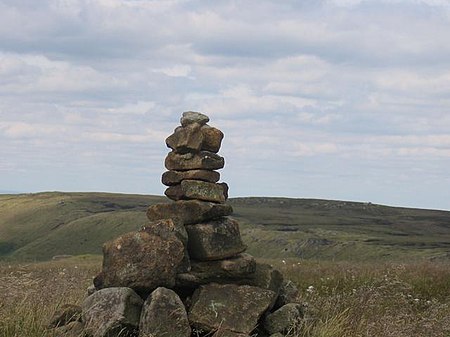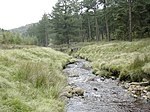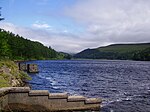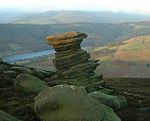High Stones
Geography of SheffieldHighest points of English countiesHills and edges of South YorkshireMountains and hills of the Peak DistrictNational Trust properties in South Yorkshire ... and 1 more
Use British English from September 2021

High Stones, at 548 metres (1,798 ft), is the highest point within the boundaries of both the City of Sheffield and South Yorkshire, England.High Stones lies on the Howden Moors towards in the northern Peak District National Park, between Langsett Reservoir to the north-east and Howden Reservoir to the south-west. The area is managed by the National Trust, as part of the Nether Hey area of their High Peak Estate.
Excerpt from the Wikipedia article High Stones (License: CC BY-SA 3.0, Authors, Images).High Stones
Howden Edge, Sheffield Bradfield
Geographical coordinates (GPS) Address Nearby Places Show on map
Geographical coordinates (GPS)
| Latitude | Longitude |
|---|---|
| N 53.44514 ° | E -1.71842 ° |
Address
Howden Edge
Howden Edge
S33 0BB Sheffield, Bradfield
England, United Kingdom
Open on Google Maps











